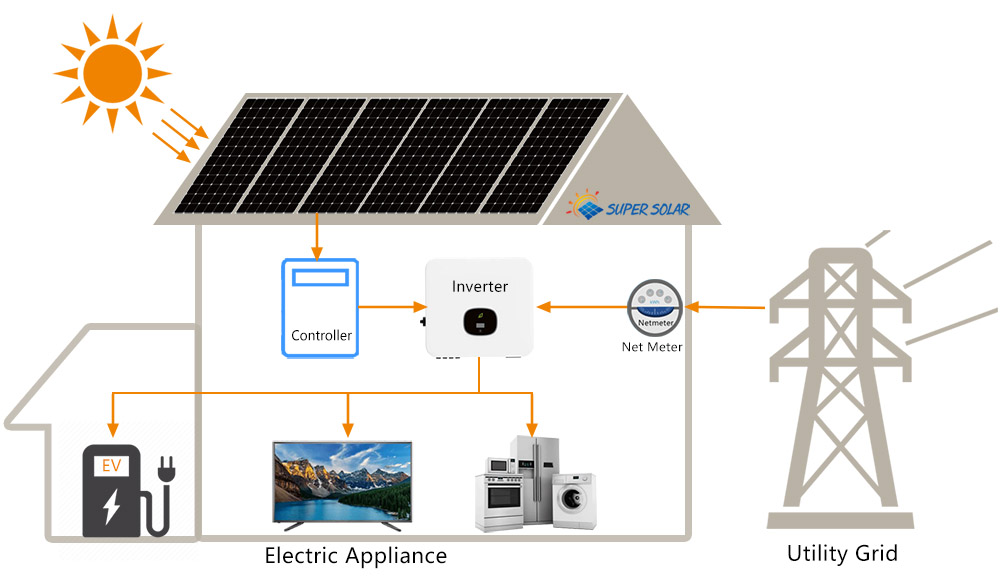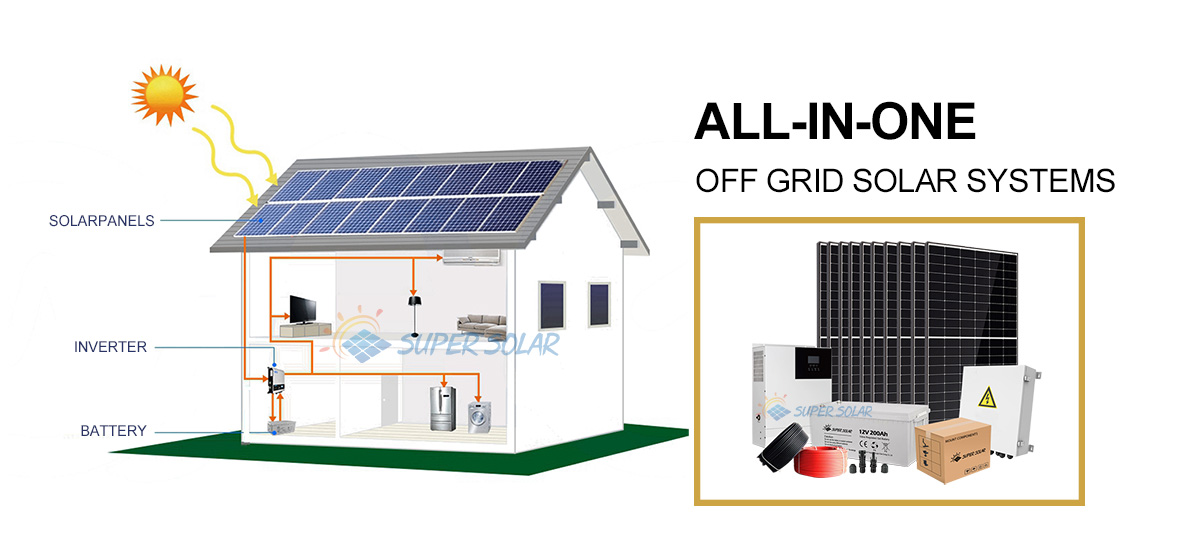
What is an on-grid, off-grid solar system and hybrid solar system
On grid is connected to the power grid, whereas off grid only feeds your house. If you live off the grid, you will need a battery backup to ensure that you always have power. Most places allow you to sell excess power to the grid and then buy it back when your power goes out.

An "On Grid" system is exactly that: it is connected to the power grid. Grid-tied systems are the least expensive to implement. The inverter will take your energy source and sync it to the grid's alternating current waveform, adding current to it. So, if your solar panels produce 3,000 watts and you consume 6,000 watts, you are simply purchasing the extra 3,000 watts from the grid rather than the full 6,000 watts. And even if you only use 1000 watts, the extra 5,000 watts you generate will flow backwards through your power meter, assisting the grid in powering the other buildings around you. Some places will pay you back at full rate for this extra power, depending on where you are. Other places will compensate you, but at a lower rate. Some places will not pay you at all, and others will not allow you to push power out at all. Before sending power to the grid, check with your local utility. There are guidelines for doing so. If you don't have a permit to generate, utilities may charge you for pushing power in some cases.

An "Off Grid" system is, well, not connected to the grid. This is the most expensive way to generate your own solar or other personal energy. This is due to the fact that you must generate all of your power and provide it as needed. This means you'll need a fairly large battery bank as well as enough generating power to meet your needs even in bad weather. My solar panels have a total capacity of 4,800 watts. We had a lot of sun today, and they generated a total of 23 kilowatt hours of energy. However, it was raining with heavy clods two days ago, and the system only produced 8 kilowatt hours. If you require 16 KWH per day, you can see where the issue is. Typically, you'll need enough battery to power your home for two days and enough solar to charge that double-sized battery in just one day. That will get you through most single bad days, but four or five bad days and you'll need a backup generator. Going off the grid is not easy.
Hybrid Solar System
This is where both systems are combined. We want the best of both worlds, but you must be careful not to have problems from either. One major issue plagues grid-connected systems. If the grid fails, your local generated power system must also go offline. Without the grid, there is no power. Basic grid-connected inverters cannot operate without the grid, and even if they could, they are not permitted by law. Assume a tree falls on a line just down the street from you. A worker arrives to repair the line. You could kill the guy working on the lines if your power system is energizing the wire. There are some very simple setups with a disconnect switch that can provide basic power during a grid outage, but energy from solar panels or wind turbines is variable. As a result, obtaining consistent power is difficult. A hybrid system, like an off-grid system, employs a battery bank. This enables it to weather fluctuations in energy production. They also use a transfer switch, which disconnects from the grid if it detects anything out of the ordinary. This way, it can power up the house without drawing power from the incoming power lines. Because you anticipate having the grid most of the time, you can size the battery to only what you require during a grid outage. How far do you really need to run? My hybrid inverter only has four 20 amp circuits. Depending on the equipment you have, you can do a variety of things with hybrid solar (or wind, for that matter). Many systems charge the battery and then operate like an on-grid system until there is a power outage. While the grid is down, the solar can charge the batteries when the sun is shining, and you can run on batteries when the sun is not shining. When the grid is restored, it returns to the grid and fully charges the battery.
A hybrid system is more expensive than a grid-tied system but less expensive than an entirely off-grid one. You can get by with a lot less battery, and you generally won't need a generator unless you experience regular or long-term grid disruptions. I've had grid-tied solar for about three years and it's fantastic, but I've now had the hybrid battery system for over a year and I'm delighted I have it. We've only experienced two outages that lasted more than an hour, but it was good to still have electricity.
Previous :
Buy Mini Solar System BalconyNext :
What is Solar Energy© Copyright: 2025 Fujian Super Solar Energy Technology Co., Ltd. All Rights Reserved

IPv6 network supported
Scan to Whatsapp

Scan to wechat
